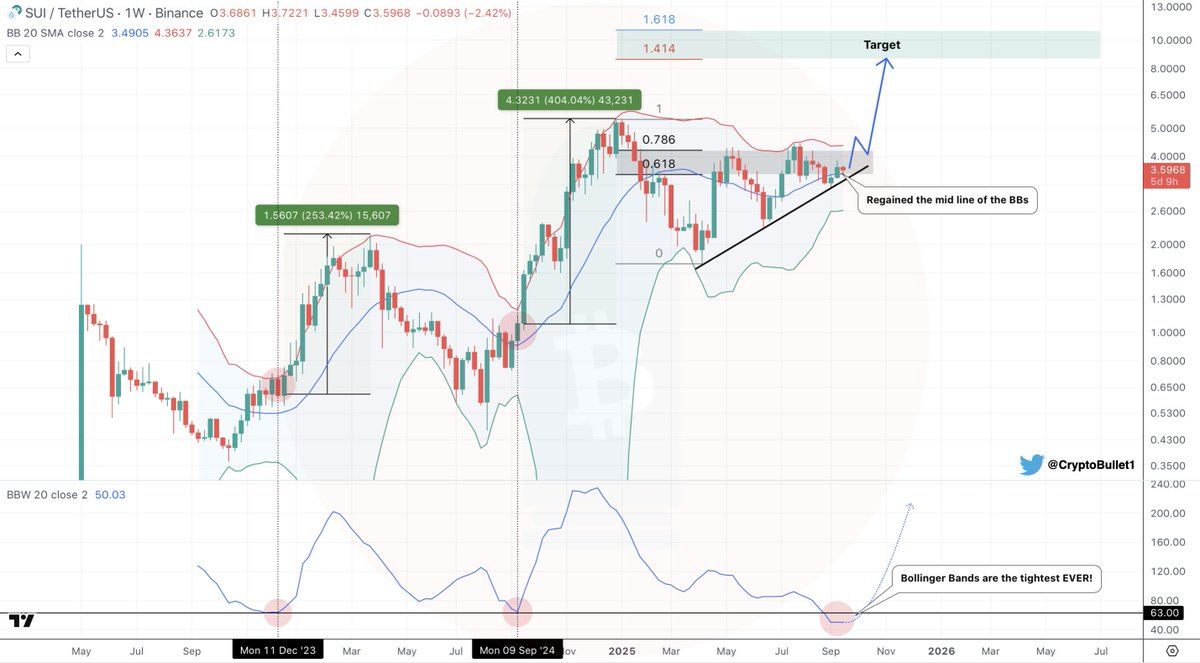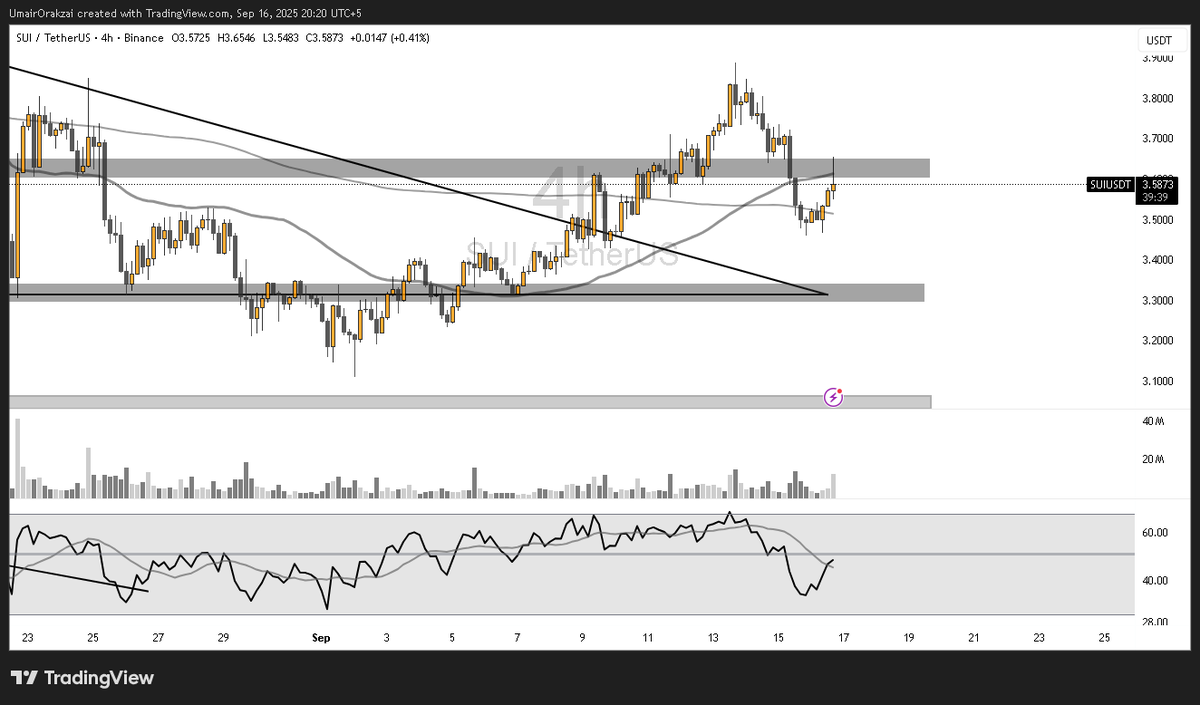SUI Ready for 200% Explosion? Google Deal + ETF Fuel Hype
Sui is gaining momentum with Google’s AP2 partnership and an ETF filing, fueling bullish narratives. Yet with record-tight consolidation and bearish technical risks, the next price move could be decisive.
Sui made a significant move by becoming one of the first partners in Google’s Agentic Payments Protocol. This opens the door to an era of AI-powered payments with stablecoins.
At the same time, an ETF filing tied to SUI has been submitted to the SEC, and technical indicators show the tightest “price compression” phase in SUI’s history. From a strategic standpoint, this is a crucial moment for investors to watch closely and prepare their plans. A strong price move that could redefine $SUI’s price narrative may be near.
Consolidating Before a Big Breakout?
In a recent announcement, Mysten Labs revealed that Sui Network (SUI) has been named one of the launch partners for the Agentic Payments Protocol (AP2), Google’s new standard for AI-driven payments. The protocol allows AI agents to execute transactions (including stablecoin payments) on behalf of users.
From a foundational perspective, choosing Sui as a “layer” for agentic payments positions it as infrastructure deeply integrated with AI-driven services. If AP2 achieves broad adoption, this could significantly increase on-chain demand. As a result, micro-payments, automated transactions, and new value flows may see a significant boost.
In addition, institutional capital continues to heat the Sui narrative. Tuttle Capital has filed with the SEC to launch a series of crypto-related ETFs, including the “Tuttle Capital SUI Income Blast ETF.” This signals that SUI-based investment products are structured for a broader institutional and retail investor pool. If such funds are approved and widely launched, it could drive stronger underlying demand.
On the technical side, the community is paying attention to a key indicator. Some traders mark the Bollinger Band Width (BBW) on SUI’s weekly chart as the “tightest” in history. This state often signals a period of energy accumulation before a major breakout (volatility expansion).
 SUI 1W chart. Source:
X
SUI 1W chart. Source:
X
“Prior two times when the BBW indicator hit the 63 level $SUI had massive pumps… Now I think we’re gonna get the third one (150-200% pump),” an X user noted.
That said, some analysts are taking a cautious to bearish stance. According to observations, the chart has broken below the top support, falling back into the range. It is currently retesting both the 50 SMA and the upper boundary. So far, the retest appears successful, suggesting the price may be preparing to move toward the range low.
 SUI 4H chart. Source:
X
SUI 4H chart. Source:
X
“For now, the setup remains bearish unless invalidated by a confirmed close back above the range,” the analyst remarked.
In summary, AP2 and the ETF filing news are creating attractive catalysts. However, short-term risks remain evident due to the price structure and lack of technical confirmation.
At the time of writing, SUI is trading at $3.62, up 3.27% over the last 24 hours. SUI faces heavy resistance at $4.3; a breakout could target $10, but failure risks a drop to $3.
Disclaimer: The content of this article solely reflects the author's opinion and does not represent the platform in any capacity. This article is not intended to serve as a reference for making investment decisions.
You may also like
Which targets are Wall Street short sellers eyeing? Goldman Sachs reveals the short-selling undercurrents amid the AI wave
Data shows that short selling in the US stock market has reached a five-year high. However, investors are not recklessly challenging AI giants; instead, they are targeting so-called "pseudo-beneficiaries"—companies that have surged on the AI concept but lack core competitiveness.
Aethir establishes DePIN computing leadership with enterprise-level growth: a new generation of computing infrastructure model driven by real revenue
Against the backdrop of surging global demand for AI infrastructure, traditional centralized cloud computing systems are gradually revealing their capacity bottlenecks and efficiency ceilings. With the rapid adoption of large model training, AI inference, and intelligent agent applications, GPUs are evolving from mere “computing resources” to “strategic infrastructure assets.” Amid this structural transformation of the market, Aethir, through its decentralized physical infrastructure network (DePIN) model, has built the industry’s largest and most commercially advanced enterprise-grade GPU computing network, quickly establishing a leading position in the sector. Commercialization breakthroughs in large-scale computing power infrastructure: To date, Aethir has deployed over 435,000 enterprise-grade GPU containers worldwide, supporting the latest NVIDIA hardware architectures such as H100, H200, B200, and B300, delivering a cumulative total of over 1.4 billion hours of real computing services to enterprise clients. In just the third quarter of 2025, Aethir achieved $39.8 million in revenue, pushing the platform’s annual recurring revenue (ARR) past $147 million. Aethir’s growth is driven by genuine enterprise demand—including AI inference services, model training, large AI agent platforms, and production workloads from global game publishers. This revenue structure marks the first time the DePIN sector has seen...
BlackRock’s Massive Bitcoin Sell-Off? Full Analysis of the Truth, Risks, and BTC Trends Through the End of 2025

Bitcoin Miners Turn to AI, but Revenues Lag Behind

